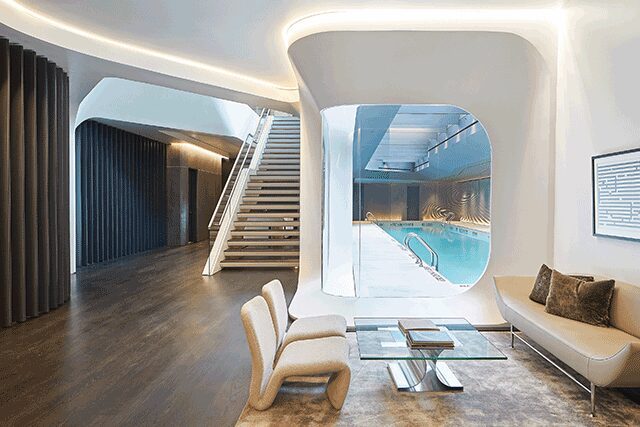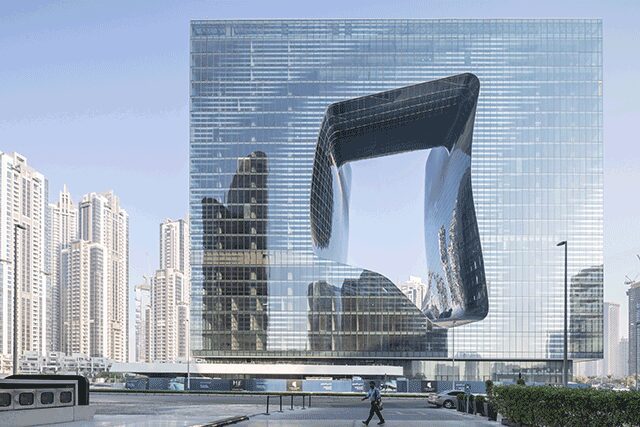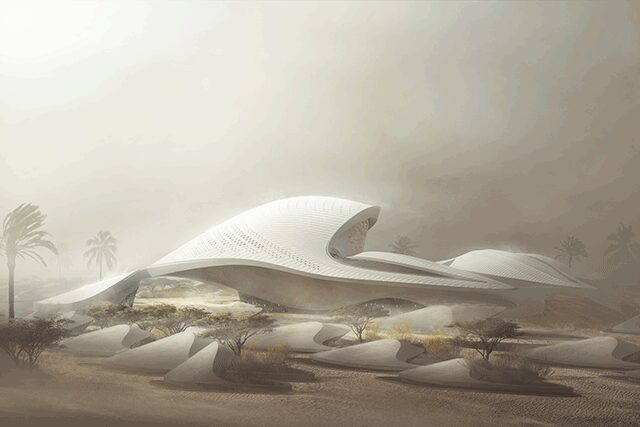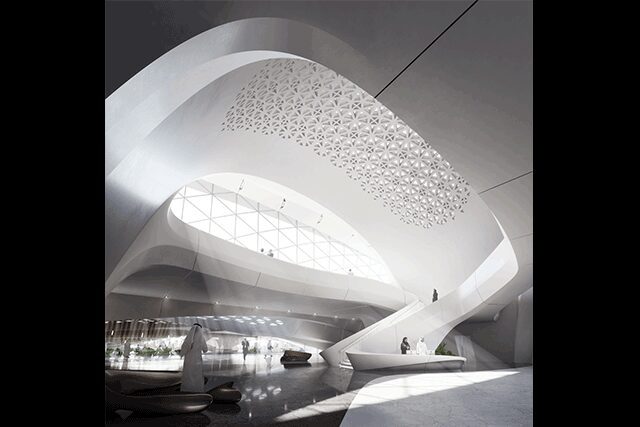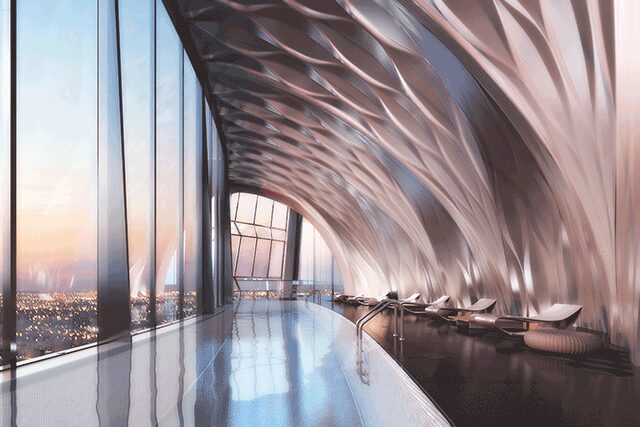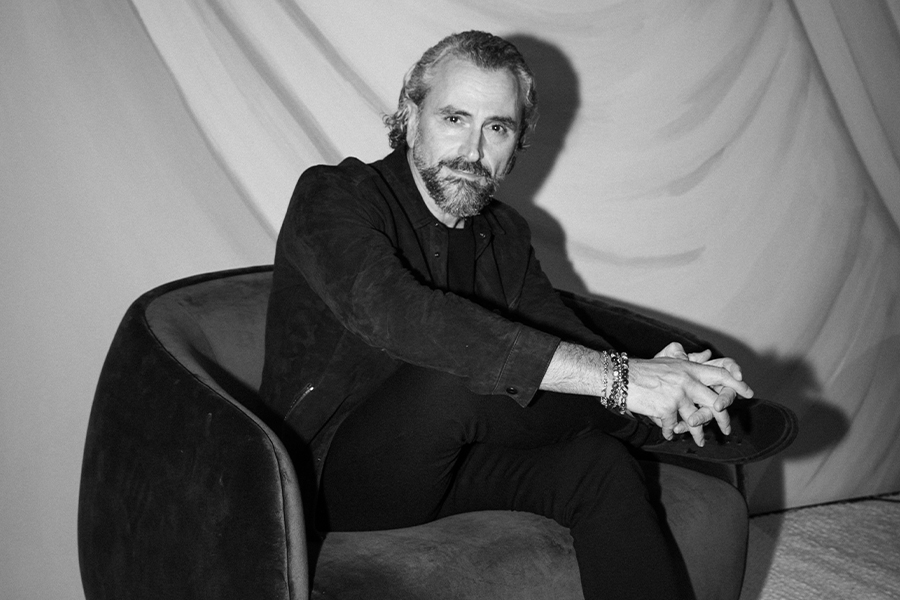Patrik Schumacher was 13 years old when he encountered photographs of Mies van der Rohe’s circa-1929 Barcelona Pavilion in art history class. “I was stunned by the otherworldly elegance of these spaces,” he says. It’s the moment he knew he wanted to be an architect. Starting his career as a student in the 1980s at London-based Zaha Hadid Architects, he has taken the reins of the experimental design firm since Hadid’s untimely passing in 2016. Sometimes controversial—he is an advocate for privatizing public spaces, for example—Schumacher is a passionate architect who coined the term parametricism, calling for a single, post-modern style of avant-garde architecture. As he looks to the future, Schumacher sees the company evolving but still grounded by Hadid’s remarkable legacy.
Meaningful Mentor
While in architecture school in Stuttgart, Germany, Shumacher had a revelation in 1985 upon seeing drawings by Hadid. “They took my breath away and implied that architecture could be much more radically inventive and exciting than it appeared during my studies.” He joined her office and delayed his return to Stuttgart. “Zaha had delivered an unprecedented expansion of the discipline’s repertoire, offering new degrees of freedom to the designer. As her collaborators, we were quick to appropriate and run with the new audacious moves made available.”
In the studio, design was both a collaborative and competitive process. She was “fierce in her demand for novel forms of beauty and brutal in her rejection of our attempts.” Hadid’s abstract sketches were not meant to offer design solutions, but lead to new formal expressions and spatial concepts. It was the responsibility of Schumacher and his colleagues to translate that hypothetical universe into more concrete design sketches. “She was working with two-dimensional formal structures, and we were working on 3D compositions inspired by her formal explorations. Thirty years later and this sense of adventure continues. Zaha changed our field and everything for me.”
Courting Controversy
Since publishing his Parametricist Manifesto in 2008, Schumacher says the movement has gained momentum, but remains fragmented. “I consider the persistent pluralism of architectural styles to be unnatural and dysfunctional. It prevents our discipline to fulfill its historical task of delivering its own unique and consistent contribution to the progress of world civilization.” He’s now identified a new, richer phase within parametricism: tectonism, which is fueled by advanced computational tools.
Schumacher has also made waves with his thoughts on social housing and how he believes it ultimately hurts the people it claims to help the most. In London, “any regular, fulltime job pushes you out of the eligibility bracket for social rent. We end up with the absurd situation where our low-paid staff indirectly subsidizes our higher-paid staff because only the latter can get the mortgage required to join the intermediate scheme.” The problem lies deeper according to Schumacher, namely in a slow and restrictive planning system that causes a shortfall in supply. “I am convinced that an unhampered market could satisfy all much better.”
Looking Ahead
Morpheus opened in Macao last year, and the hotel, the first high-rise supported by a free-form steel exoskeleton, flaunts a geometric façade punctuated by three voids and a soaring atrium. “It’s a surprising, stimulating experience, like time travel into the future.” The firm’s newest projects will continue that unencumbered design style. A Mandarin Oriental in Melbourne is in the works, as is a tower in the center of Hong Kong, a concert hall in Yekaterinburg, Russia, and the new Navi Mumbai International Airport. “Not only did we keep the firm afloat—indeed, we thrived and expanded—but we held on to our ambition to catch the most prominent projects to excel, to innovate, to astound. I believe we are fulfilling Zaha’s legacy best by defying expectations and further pushing the boundary of what is possible.”
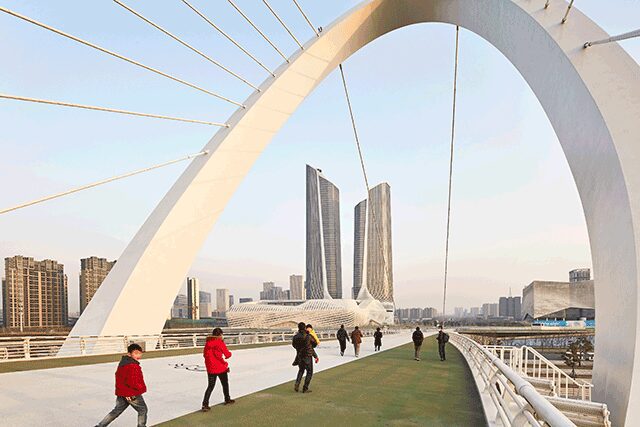
A footbridge at the Nanjing International Youth Center connects the city to the rural landscape of Jiangxinzhou Island
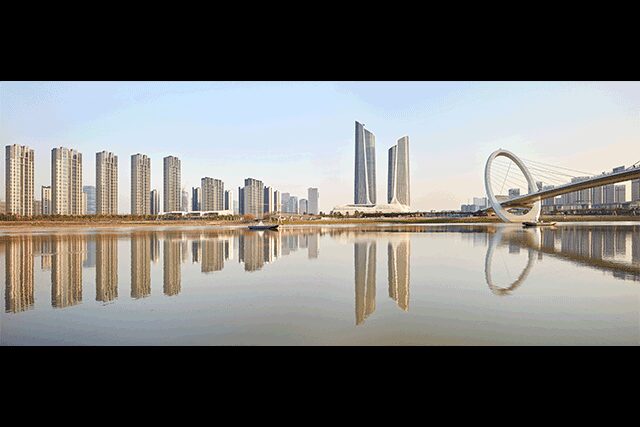
The two towers that comprise Nanjing International Youth Center are the tallest Zaha Hadid Architects have completed to date
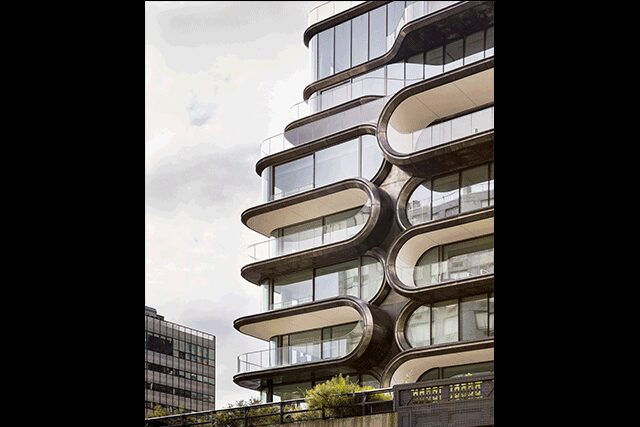
The handcrafted steel façade at 520 West 28th in New York pays homage to Chelsea’s industrial history


